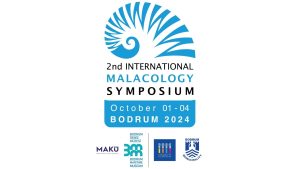CEVAT ŞAKİR KABAAĞAÇLI
The Fisherman of Halicarnassos
1890-1973
Cevat Şakir Kabaağaçlı was born in Crete on April 17, 1890. His father, Mehmet Şakir Paşa of the Kabaağaçlızade family, was an Ottoman commander and a history writer. His mother was Sare İsmet Hanım. The family circles of his uncle and his father had a great influence on Cevat Şakir’s personality. Many world famous artists were born into this family. Due to his father’s service as an Ottoman official, he spent his early childhood, until he was five, in Faleron, Athens. Later, his family moved to Büyükada in Istanbul.
He began his education in the Büyükada Neighborhood School. Since his English was very good, he was accepted into Robert College of Istanbul as a first year student, skipping the English language preparatory program. Graduating from Robert College with honors, his family sent him to England where he studied history in Oxford University.
In 1918, he returned to Istanbul and began working in the field of journalism. He wrote articles, drew cover pictures, illustrations and cartoons for Zekeriya Sertel’s magazines of Resimli Ay, Resimli Hafta and Sedat Simavi’s magazine: İnci.
On April 13, 1925, in the early years of the Turkish Republic, the Independence Court of Ankara sentenced Cevat Şakir to a three-year exile in the Bodrum Castle for his article titled “Hapishanede İdama Mahkum Olanlar Bile Bile Asılmaya Nasıl Giderler” (How do those prisoners sentenced to death go knowingly to be hung), which had appeared in the magazine Resimli Hafta. This was his first arrival in Bodrum.
He lived in Bodrum for about twenty-five years. While here, he began writing using the pen name: “the Fisherman of Halicarnassos” (the ancient name of Bodrum during the time of the Carians). He strove hard to make Bodrum a beautiful place. He ordered seeds from all over the world and planted them all around Bodrum. During his years in Bodrum, he was not only a writer, but also a gardener, a teacher and a fisherman.
The difficult years of the Second World War forced him to leave Bodrum. He sold both his boat Yatağan and his house, and after scattering whatever seeds he had left with him, he then moved to Izmir.
In Izmir, he went on with his life by writing for newspapers and magazines and working as a guide. During these years, he made many trips to Bodrum, visiting the trees that he had planted and seeing his seaman friends. In Izmir, he wrote for magazines and newspapers like Gündüz Hikâyeleri, Tan, Cumhuriyet, Demokrat İzmir and Anadolu.
He died on October 13, 1973 in the Merhaba Apartment in the Hatay neighborhood of Izmir.
In accordance with his will, he was buried on top of the “Turbe” hill in Bodrum.
He was married to his cousin Hamdiye Hanım and later to Hatice Hanım, a daughter of a Cretan family.
Sina Kabaağaçlı, his son from Hamdiye Hanım, died in 1997. Two of his daughters from his marriage to Hatice Hanım, İsmet Noonan and Aliye Önce, live in Izmir. His son from the same marriage, Suat Kabağaçlı, died in 2009.
He wrote one memoir (Mavi Sürgün), six novels (Aganta Burina Burinata, Uluç Reis, Ötelerin Çocuğu, Turgut Reis, Deniz Gurbetçileri, Bulamaç), five story books (Ege’den Denize Bırakılmış Bir Çiçek, Gençlik Denizlerinde, Parmak Damgası, Çiçeklerin Düğünü, Dalgıçlar) and eleven books in which he collected his essays (Anadolu Efsaneleri, Anadolu Tanrıları, Bodrum, Anadolu’nun Sesi, Asia Minor, Hey Koca Yurt, Merhaba Anadolu, Düşün Yazıları, Altıncı Kıta Akdeniz, Sonsuzluk Sessiz Büyür, Arşipel).
One of the greatest story, essay and novel writers of Turkish literature, Cevat Şakir Kabaağaçlı, whose life was synonymous with Bodrum, was a master of living.
